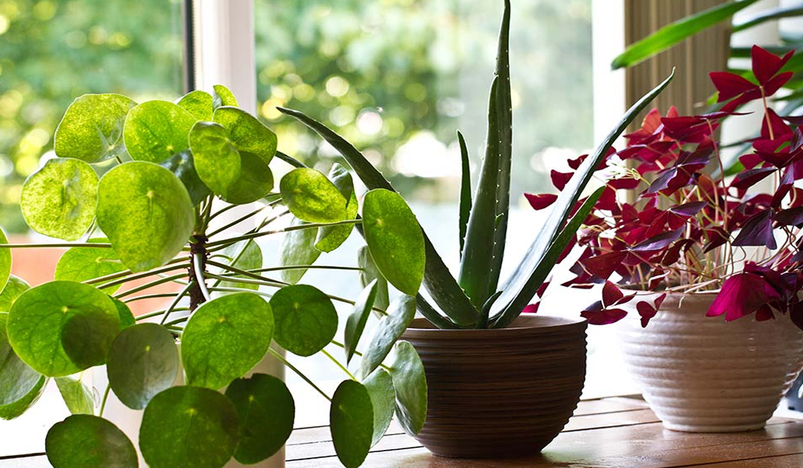
How to Take Care of your House Plants
The two biggest components of maintaining a healthy plant are the correct amount of light and water — that may seem obvious right? But it also takes patience and some trial and error before you get it right. Here are the most important things to consider setting your plants up for success.
1. Watering Your Houseplants
All houseplants have slightly different watering requirements, depending on how they're grown and changes in plant growth through the seasons. It's best to water on an as-needed basis rather than by a set calendar schedule.
2. Fertilize Houseplants Periodically
Like watering, there's not an easy rule to know how much to fertilize: It depends on the plant's growth rate and age, and the time of year. Most houseplants put on a growth spurt in spring and summer, so this is the best time to fertilize them. During the short days of fall and winter, most houseplants don't need much, if any, fertilizer. Follow label directions to know how much plant food to use. Like overwatering, it's important to avoid overfertilizing your houseplants.
3. Repot Overgrown Houseplants
Not sure if your houseplants need repotting? Check the root systems. If the roots are circling the inside of the container, it may be time to repot the plant. If the plant has outgrown its pot, you can transplant it into a slightly larger container. If you'd like to keep it in the same pot, trim off some of the roots with a sharp knife and replant it into the container using fresh potting soil.
As you repot your houseplants, it's also a good time to divide those with multiple stems to create new plants. Spring and summer are the best seasons for repotting your houseplants.
4. Remove Dust From Plants
Almost all houseplants look better with regular cleaning. Dust collects on leaves, so wash them with a gentle shower of room-temperature water or dust them with a soft brush if the plants have hairy leaves (which can hold onto moisture and encourage disease). For plants with smooth leaves, you can also use a cloth to gently wipe away any dust that collects on leaves. Not only does this improve your plant's appearance, but it'll actually help it to soak up more light.
5. Deadhead Flowers and Remove Dying Leaves
Trim faded flowers from your plants to encourage more blooms and help prevent disease problems. While you're at it, be sure to remove yellow, brown, or withered leaves. It's a good idea to wipe off the blades of your pruners with rubbing alcohol before moving on to a different plant to avoid spreading any pests and diseases.
6. Control Insect Pests
A forceful spray of water from the hose helps knock down the population of these pests, too. Rubbing alcohol is effective on insects with waxy coatings such as scale and mealybugs; dab it on with a cotton ball.
.jpg)
Qatar Secures Place Among the World's Top 10 Wealthiest Nations
.jpg)
Hamad International Airport Witnesses Record Increase in Passenger Traffic

Saudi Arabia: Any visa holder can now perform Umrah

What are Qatar's Labour Laws on Annual Leave?
Leave a comment